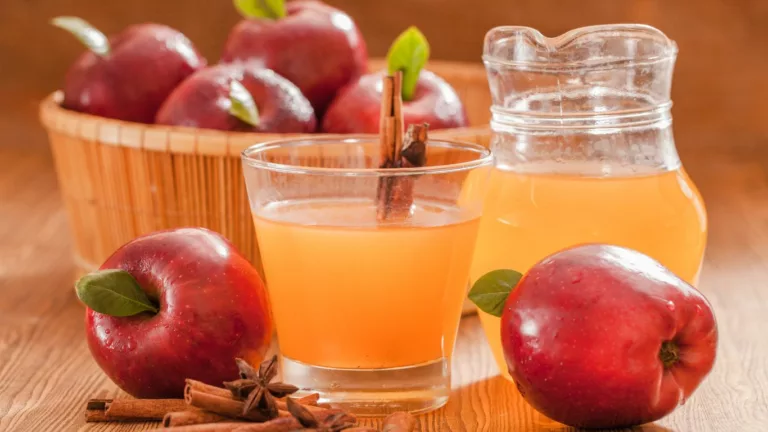Can Green Smoothies Help Lower Blood Pressure Naturally?
As a physician specializing in hypertension management, I’m often asked about natural remedies that can help lower blood pressure. One of the most common questions I receive is, “Can green smoothies help lower blood pressure?” The answer isn’t simple, but there’s a lot to consider. Let’s dive into the science behind it, and I’ll share my personal experience with some patients who have incorporated green smoothies into their lifestyle. Spoiler alert: there’s potential, but it’s more than just blending greens and hoping for the best.
What Are Green Smoothies and How Do They Fit into Hypertension Management?
Green smoothies are a blend of leafy greens, fruits, and sometimes other vegetables, all mixed together into a nutrient-packed drink. The key ingredients typically include spinach, kale, or other leafy greens, along with fruits like bananas, berries, or apples for sweetness and added vitamins. Some people also add extras like chia seeds, flax seeds, or protein powder. These smoothies are widely considered to be health-boosting beverages, thanks to their high content of fiber, antioxidants, vitamins, and minerals.
So, how do these green drinks tie into hypertension management? Let me first point out that high blood pressure, or hypertension, is a chronic condition where the force of blood against the walls of the arteries is consistently too high. While medications are often necessary for blood pressure control, making some changes to your diet can also play a significant role in managing hypertension.
Why the Interest in Green Smoothies for Blood Pressure?
It’s no surprise that many people are turning to green smoothies as a potential aid in lowering blood pressure. Leafy greens, the cornerstone of these smoothies, are packed with potassium, which is crucial for balancing the effects of sodium in your body. If you’re familiar with the DASH diet (Dietary Approaches to Stop Hypertension), you’ll know that increasing potassium intake is one of the key recommendations for managing blood pressure. Green smoothies are an easy and delicious way to incorporate these potassium-rich foods into your daily routine.
Additionally, antioxidants found in green leafy vegetables, such as flavonoids, have been shown to help relax blood vessels, improve circulation, and support overall cardiovascular health. When blended into a smoothie, these vegetables retain most of their nutrients, making them a powerhouse for your heart health.
Can Green Smoothies Help Lower Blood Pressure? The Evidence

There’s growing evidence that the nutrients found in green smoothies—specifically those from leafy greens—may help lower blood pressure. But let’s break this down to see how this works. Potassium is one of the main nutrients at play here. According to studies, potassium helps ease tension in the blood vessel walls, which can lower blood pressure. Foods rich in potassium, like spinach and kale, are key ingredients in most green smoothies.
Additionally, magnesium, another mineral commonly found in leafy greens, has been linked to blood pressure regulation. Magnesium helps relax blood vessels and improve blood flow, which could lead to a reduction in blood pressure over time. Some research has shown that people who increase their intake of magnesium-rich foods experience modest reductions in blood pressure.
Real-Life Impact: Can Green Smoothies Work for You?
As a physician, I’ve seen firsthand how small dietary changes can make a big difference. While I wouldn’t recommend relying solely on green smoothies for blood pressure management, they can certainly complement a healthy lifestyle. For example, a patient of mine with mild hypertension started drinking a green smoothie every morning. Over time, along with consistent medication, regular exercise, and better sleep, her blood pressure gradually improved. It wasn’t a quick fix, but combined with other changes, the smoothies played a role in her overall health.
That said, green smoothies aren’t a magic bullet. They shouldn’t replace prescribed medications or other lifestyle changes that are critical for managing high blood pressure. However, when combined with a healthy diet, regular exercise, and stress management, green smoothies may be a useful addition to your hypertension control toolkit.
What Ingredients Should You Look for in Your Green Smoothie?

If you’re considering incorporating green smoothies into your daily routine, you’ll want to focus on ingredients that provide the most benefit for blood pressure. Here are a few key ingredients to look for:
- Leafy Greens: Kale, spinach, and swiss chard are all rich in potassium and magnesium.
- Berries: Blueberries, strawberries, and raspberries are high in antioxidants, particularly anthocyanins, which have been linked to improved blood vessel function.
- Beets: These root vegetables are packed with nitrates, which help dilate blood vessels and improve blood flow.
- Bananas: Bananas are a great source of potassium, making them a perfect smoothie ingredient for managing blood pressure.
- Flax Seeds: These are rich in omega-3 fatty acids, which can help reduce inflammation and improve heart health.
Incorporating these ingredients into your daily green smoothie can give you a good boost in terms of nutrients that support heart health. However, just blending these foods alone isn’t enough. You’ll need to maintain an overall healthy lifestyle, including a balanced diet and regular physical activity, to truly see the benefits.
The Role of Diet in Hypertension: More Than Just Green Smoothies

While green smoothies can certainly be part of the equation, it’s essential to remember that managing hypertension is about much more than just what you drink. Diet, exercise, stress management, and regular monitoring of blood pressure all play important roles in keeping your blood pressure in check. A well-rounded approach is key.
If you’re serious about lowering your blood pressure through dietary changes, consider adopting the DASH diet (Dietary Approaches to Stop Hypertension), which emphasizes whole grains, lean proteins, low-fat dairy, fruits, and vegetables. Green smoothies fit right in with the principles of the DASH diet, so they can be an excellent addition to your daily meals, but they should be part of a broader, balanced eating plan.
How to Make the Perfect Green Smoothie for Blood Pressure

Now that we’ve discussed the benefits of green smoothies for lowering blood pressure, let’s get into the practical side of things. How can you make a green smoothie that maximizes these benefits? It’s all about the right balance of ingredients.
From my experience, a well-balanced green smoothie should have a mix of the right greens, fruits, and other health-boosting ingredients. I often tell my patients to think of smoothies as an easy, nutrient-packed snack or meal that can help complement their other healthy habits. Here’s a simple yet effective recipe I recommend to many of my patients who are managing high blood pressure:
Basic Green Smoothie Recipe for Hypertension
This recipe includes ingredients that are rich in potassium, magnesium, and antioxidants, all of which play a vital role in lowering blood pressure:
- 1 cup spinach or kale: These leafy greens are high in potassium and magnesium, two minerals essential for blood pressure control.
- 1 medium banana: Bananas are an excellent source of potassium, which can help balance sodium levels in the body.
- 1/2 cup of blueberries: Blueberries are packed with antioxidants that help reduce inflammation and improve heart health.
- 1/2 cup of unsweetened almond milk: This adds a creamy texture without the extra sugar found in dairy products.
- 1 tablespoon of chia seeds: Rich in omega-3 fatty acids and fiber, chia seeds are heart-healthy and may contribute to lowering blood pressure.
- 1 tablespoon of flaxseeds: Like chia seeds, flaxseeds are full of omega-3 fatty acids, which promote healthy blood flow.
Blend all these ingredients together with some ice or water for a refreshing, nutrient-packed smoothie. You can experiment with this base recipe by swapping out ingredients based on your preferences, but this is a great starting point to maximize the heart-healthy nutrients you’re looking for.
Incorporating Green Smoothies into Your Daily Routine

One of the most common challenges I hear from patients is sticking to a new habit. Integrating green smoothies into your daily routine doesn’t need to be complicated. I often recommend that my patients start their day with a green smoothie, as it’s a quick, convenient, and healthy way to fuel your morning. Plus, having a nutritious start can set the tone for the rest of your day.
If mornings are rushed for you, here are a few tips I suggest:
- Prep your ingredients the night before: Place your smoothie ingredients in a container or freezer bag the night before so you can just blend them in the morning. This saves time and ensures you’re ready to go.
- Keep it simple: Start with a few key ingredients that you know you’ll enjoy and work your way up to more complex smoothies as you get used to the habit.
- Try it as a snack: If a smoothie for breakfast doesn’t work for you, try it as a mid-afternoon snack to give you a nutrient boost and curb cravings.
The beauty of green smoothies is their versatility. You can change the ingredients according to what you have on hand, and they can easily be tailored to fit your specific dietary preferences. They’re also a great way to sneak in more servings of fruits and vegetables, especially for those who have trouble getting enough in their regular meals.
The Importance of Lifestyle Changes Along with Green Smoothies

While green smoothies can certainly play a role in lowering blood pressure, it’s crucial to remember that they are just one piece of the puzzle. In my experience, patients who see the best results with hypertension management combine a variety of lifestyle changes. A green smoothie here and there won’t solve the problem on its own, but when integrated into a broader healthy lifestyle, they can definitely contribute to lowering blood pressure.
Here are a few other important changes to consider when managing hypertension:
1. Regular Exercise
Exercise is one of the most effective ways to reduce high blood pressure. Regular physical activity helps strengthen the heart and improve circulation, both of which help keep blood pressure in check. Aim for at least 30 minutes of moderate activity, such as brisk walking, cycling, or swimming, most days of the week. And remember, even small amounts of exercise can have a positive impact on your blood pressure.
2. Stress Management
Stress can significantly affect your blood pressure, and as someone who works in healthcare, I know how important it is to manage stress levels. Mindfulness practices like meditation, deep breathing, or yoga can help reduce stress and improve your overall mental well-being. Don’t forget to take time for yourself and engage in activities that help you relax and unwind.
3. Limit Sodium and Processed Foods
A diet high in sodium (salt) and processed foods can contribute to high blood pressure. One of the easiest ways to reduce sodium intake is by eating whole, unprocessed foods and cooking at home. The DASH diet (Dietary Approaches to Stop Hypertension) encourages the consumption of fruits, vegetables, whole grains, and lean proteins while minimizing salt and processed foods.
4. Proper Sleep
Adequate sleep is another critical factor in managing blood pressure. Lack of sleep can contribute to increased blood pressure, so make sure you’re getting 7-8 hours of restful sleep each night. Good sleep hygiene, such as sticking to a regular sleep schedule and creating a calm, relaxing bedtime routine, can make a big difference.
By combining these lifestyle habits with green smoothies, you’re setting yourself up for success in managing your blood pressure. But remember, it’s always a good idea to work with your healthcare provider to develop a personalized plan that fits your specific needs.
Potential Risks and Considerations with Green Smoothies for Hypertension

While green smoothies can be a great addition to a healthy diet for lowering blood pressure, they aren’t a one-size-fits-all solution. As with any dietary change, it’s important to be aware of a few potential risks and considerations when incorporating green smoothies into your routine. Let’s discuss a few things to keep in mind before you start blending away.
1. Overdoing High-Potassium Ingredients
Green smoothies are often packed with potassium-rich ingredients like spinach, kale, and bananas—great for lowering blood pressure. However, too much potassium can cause problems, especially for individuals with kidney disease. If your kidneys are not functioning optimally, excessive potassium can build up in the blood, leading to hyperkalemia (high potassium levels), which can be dangerous.
If you have any kidney conditions, it’s crucial to check with your healthcare provider before making green smoothies a regular part of your diet. Even if you don’t have kidney disease, I always recommend moderation when consuming potassium-rich foods. Too much of a good thing can lead to an imbalance that could affect your heart rhythm and other body functions.
2. Excess Sugar in Fruit-Based Smoothies
Another thing to be cautious about is the amount of fruit you add to your smoothies. While fruits are a fantastic source of vitamins, antioxidants, and fiber, they also contain natural sugars. If you’re adding too many sugary fruits like mangoes, pineapples, or overly ripe bananas, the smoothie can become a high-sugar treat that may not be ideal for people with hypertension, especially those who are also managing diabetes or prediabetes.
To keep your smoothies on the healthier side, try to limit the number of high-sugar fruits in your blend. Focus more on leafy greens and low-sugar fruits like berries, which are rich in antioxidants and have a lower glycemic index. I personally advise my patients to focus on whole fruits and avoid fruit juices, which can spike blood sugar levels even more quickly.
3. Potential Allergies or Sensitivities
Another risk to consider is food allergies or sensitivities. Some ingredients commonly found in green smoothies, such as nuts, seeds, or dairy substitutes (like almond milk), can trigger allergic reactions in sensitive individuals. Be sure to check the ingredients carefully and pay attention to any food sensitivities you may have. If you’re introducing a new ingredient into your smoothie, it’s always a good idea to start with a small amount and monitor how your body reacts.
Can Green Smoothies Replace Medication for Hypertension?

Let’s be clear: green smoothies should not be seen as a replacement for prescribed medication for hypertension. While they can support heart health and may help in reducing blood pressure, they are not a cure-all, and they shouldn’t be used as a substitute for proven hypertension treatments.
In my practice, I always emphasize the importance of working with your healthcare provider to create a comprehensive hypertension management plan that includes medication, lifestyle changes, and dietary adjustments. While green smoothies may provide a valuable nutrient boost and help lower blood pressure naturally, they should be viewed as part of a well-rounded approach to hypertension management.
If you’re on medication for high blood pressure, make sure to follow your doctor’s instructions and regularly monitor your blood pressure to ensure your treatment plan is working effectively. It’s always a good idea to keep your healthcare provider informed about any changes to your diet, including the addition of green smoothies, so they can track how your blood pressure responds.
Scientific Studies and Evidence Supporting Green Smoothies for Blood Pressure
As much as we love talking about the benefits of green smoothies, it’s important to back up our claims with solid research. Fortunately, there’s a growing body of evidence supporting the idea that certain ingredients commonly found in green smoothies, like leafy greens, berries, and beets, can have a positive impact on blood pressure.
For instance, a study published in the American Journal of Clinical Nutrition found that increasing dietary potassium intake through foods like leafy greens can help lower blood pressure, especially in individuals with high blood pressure. Similarly, research published in the Hypertension Journal suggests that antioxidants found in foods like berries can help improve vascular health and reduce blood pressure.
While green smoothies themselves haven’t been studied in-depth, the individual ingredients used in these drinks have shown promise for hypertension management. So, while drinking a green smoothie alone may not be the magic solution, incorporating these heart-healthy ingredients into your diet can certainly support your blood pressure management efforts.
Disclaimer and Final Thoughts
Before you rush to the blender, it’s essential to note that green smoothies should be seen as a supplement to a balanced lifestyle—not a replacement for professional medical treatment. Always consult with your healthcare provider before making significant changes to your diet, especially if you’re managing a health condition like hypertension.
In conclusion, green smoothies can indeed play a helpful role in supporting healthy blood pressure levels, but they’re just one piece of the puzzle. Combine them with other heart-healthy habits, such as regular exercise, stress management, and a balanced diet, for the best results. And always remember: consistency is key when it comes to managing hypertension.

Dr. Gwenna Aazee is a board-certified Internal Medicine Physician with a special focus on hypertension management, chronic disease prevention, and patient education. With years of experience in both clinical practice and medical writing, she’s passionate about turning evidence-based medicine into accessible, actionable advice. Through her work at Healthusias.com, Dr. Aazee empowers readers to take charge of their health with confidence and clarity. Off the clock, she enjoys deep dives into nutrition research, long walks with her rescue pup, and simplifying medical jargon one article at a time.






